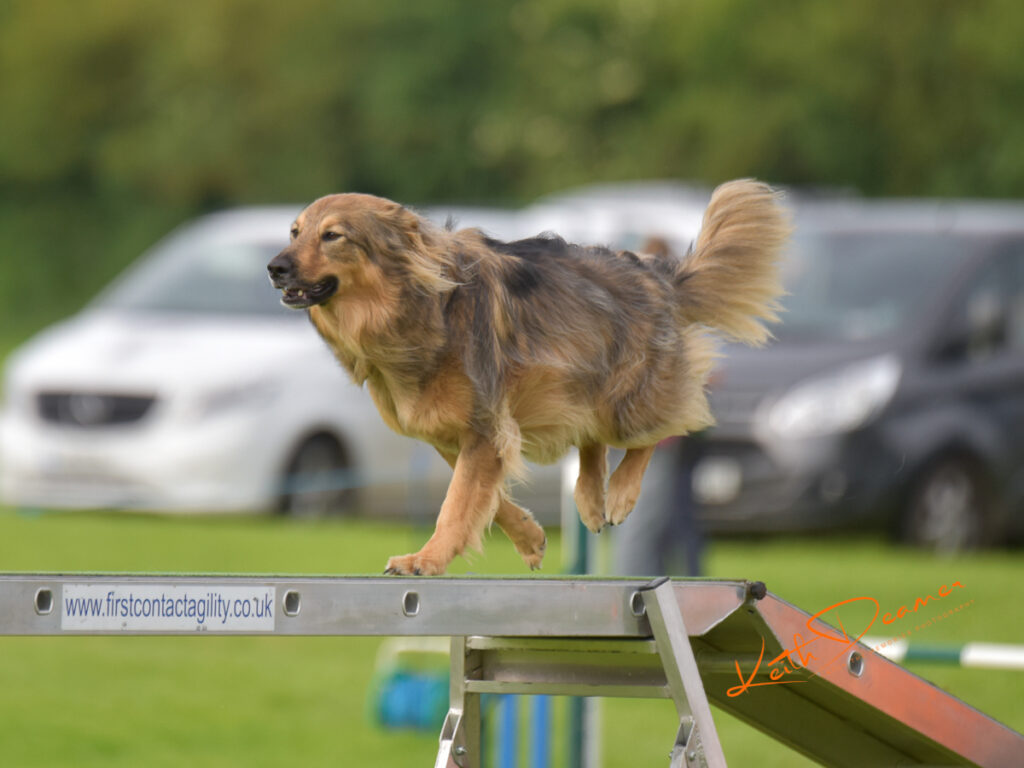
Dog agility training is an exciting and rewarding way to build a strong bond with your dog while enhancing their physical fitness, mental sharpness, and overall behaviour. Whether you are a beginner or an experienced handler, this guide will provide you with essential dog agility training tips, must-have agility equipment, and expert advice for all breeds.
What is Dog Agility Training?
Dog agility training is a fast-paced canine sport where dogs navigate an obstacle course under the guidance of their handler. It improves a dog’s obedience, responsiveness, and overall fitness while providing a fun and engaging challenge.
Benefits of Dog Agility Training:
- Strengthens the bond between dog and owner
- Enhances obedience and impulse control
- Provides excellent physical and mental stimulation
- Boosts confidence in shy or reactive dogs
- Encourages teamwork and problem-solving skills
Essential Dog Agility Equipment
Investing in the right dog agility equipment is crucial for effective training. Here are some key pieces:
1. Jumps
Jumps are fundamental in agility courses and come in various styles such as single jumps, double jumps, and tire jumps. Adjustable heights make them suitable for all breeds.
2. Tunnels
Tunnels are designed to test your dog’s speed and confidence. They can be straight or curved, challenging dogs to navigate them quickly and efficiently.
3. Weave Poles
One of the most challenging obstacles, weave poles require precision and coordination. Start with widely spaced poles and gradually narrow them as your dog improves.
4. A-Frame
The A-frame is a climbing obstacle that builds strength and confidence. Teaching proper contact training ensures dogs touch the designated areas before moving to the next obstacle.
5. Seesaw
The seesaw helps dogs improve balance and coordination. Training should be done gradually to prevent fear or hesitancy.
Dog Agility Training Tips for Beginners
1. Start with Basic Obedience Training
Before agility, ensure your dog has mastered basic commands such as sit, stay, and recall. A strong foundation in obedience training helps in agility success.
2. Use Positive Reinforcement
Reward-based training encourages dogs to enjoy agility training. Treats, praise, and toys work as excellent motivators.
3. Train in Short Sessions
Dogs learn best in short, fun sessions rather than long, exhausting ones. Aim for 10-15 minutes per session to keep them engaged.
4. Gradually Introduce Equipment
Introduce one obstacle at a time and ensure your dog is comfortable before moving on. Confidence-building is key to success.
5. Consider Dog Agility Training Classes
Group classes or one-to-one dog training sessions provide expert guidance, helping to refine techniques and improve performance.
Best Dog Breeds for Agility Training
While any dog can participate in agility, some breeds excel due to their natural athleticism and intelligence. Popular agility breeds include:
- Border Collie
- Shetland Sheepdog
- Australian Shepherd
- Jack Russell Terrier
- Belgian Malinois
- Poodle
Can You Train an Older Dog for Agility?
Yes! While puppies have an advantage, older dogs can also excel with the right approach. Start with low-impact exercises and gradually increase difficulty. Keeping older dogs fit and active allows them to stay healthier, maintain mobility, and can even extend their life. Agility training provides mental and physical stimulation that helps prevent age-related decline and keeps senior dogs engaged and happy.
Tips for Training a Stubborn Dog in Agility
If your dog is reluctant or distracted during training, try these techniques:
- Use high-value treats or favourite toys as rewards
- Keep training sessions positive and stress-free
- Avoid punishment; instead, reward small achievements
- Make sessions fun and engaging
When Should Dogs Start Agility Training?
Puppies can start basic groundwork at 8-10 weeks old, focusing on obedience and foundation skills. Full agility training should begin once their joints and bones are fully developed (typically around 12-18 months old, depending on breed).
If your puppy is too young to start actual agility training, Gundog training is an excellent foundation to build essential skills such as focus, impulse control, and responsiveness. Many of my agility clients with new puppies use my monthly Gundog classes as a stepping stone before transitioning into agility training. This ensures that their pups develop strong obedience and problem-solving skills that are highly beneficial for agility.
Internal Links for Further Reading:
- Fresh Start Dog Training
- Agility Training Programs
- Why High-Drive and Reactive Dogs Need Specialised Training
- Upcoming Dog Training Workshops
Conclusion
Dog agility training is a fun and rewarding experience that enhances your dog’s skills, fitness, and obedience. Whether you’re training for competitions or simply for fun, the right approach, equipment, and training methods will set you up for success. Start training today and enjoy the journey with your four-legged companion!
I have a new beginners agility class starting in April. If you’d like to reserve a place, please get in touch!
Leave a Reply